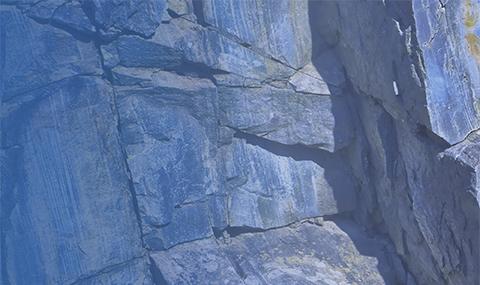Non-Equilibrium Continuum Physics
This course is intended to introduce graduate students to the essentials of modern continuum physics, with a focus on non-equilibrium phenomena in solids and within a thermodynamic perspective. Special focus is given to emergent phenomena, where collective many-body systems reveal physical principles that cannot be inferred from the microscopic physics of a small number of degrees of freedom. General concepts and principles – such as conservation laws, symmetries, material frame-indifference, dissipation inequalities and non-equilibrium behaviors, spatiotemporal symmetry-breaking instabilities and configurational forces – are emphasized. Examples cover a wide range of physical phenomena and applications in diverse disciplines. The power of field theory as a mathematical structure that does not make direct reference to microscopic length scales well below those of the phenomenon of interest is highlighted. Some basic mathematical tools and techniques are introduced. The course is self-contained and highlights essential ideas and basic physical intuition. Together with courses on fluid mechanics and soft condensed matter, a broad background and understanding of continuum physics will be established.
No prior knowledge of the subject is assumed. Basic knowledge of statistical thermodynamics, vector calculus, partial differential equations, dynamical systems and complex analysis is required.
General Principles and Concepts
- Introduction: Background and motivation
- Mathematical preliminaries: Tensor Analysis
-
Motion, deformation and stress
- Strain measures
- The concept of stress
-
Equations of motion, the laws of thermodynamics and objectivity
- Conservation laws
- The laws of thermodynamics
- Heat equations
- Objectivity (frame - indifference)
Reversible processes: non-dissipative constitutive behaviors
-
The linearized field theory of elasticity
- General derivation for anisotropic and isotropic materials
-
Two-dimensional Elasticity
- Scalar elasticity
- Conformal invariance
- In-plane elasticity, Airy stress function
- Elastic waves
- The linearized field theory of thermo-elasticity
-
The non-linear field theory elasticity
- Entropic elasticity (“Rubber elasticity")
- Geometric nonlinearities and stress measures
- Small amplitude waves in nonlinear elastic solids
- Spatiotemporal instabilities
Irreversible processes: dissipative constitutive behaviors
-
Visco-elasticity
- Viscous deformation
- Bringing linear viscous and elastic deformation together
- Oscillatory response
- Viscoelastic waves
- The emergence of solidity: Amorphous solids and the glass transition puzzle
-
The field theory of plasticity
- Perfect plasticity
- The theoretical and practical shear strength (yield stress) -- dislocations needed
- The field theory of elaso-perfect plasticity: Examples
- Beyond perfect plasticity
- Thermodynamics with internal variables
-
Material failure
- Some scaling arguments
- Rigorous results in the framework of Linear Elastic Fracture Mechanics
- Configurational forces and the J-integral
- Fracture toughness and fracture energy
- Dynamic fracture
- Limitations of Linear Elastic Fracture Mechanics (LEFM) and beyond it
The first lecture will take place on 01/04/2025 at 09:15 (Weissman Auditorium).
Contact us
Lecturer: Prof. Eran Bouchbinder
Perlman Chemical Sciences Building Room 701
eran.bouchbinder@weizmann.ac.il
TA: Daniel Castro
Nehemiah and Naomi Cohen Building room 306
daniel.castro@weizmann.ac.il
Shai Kiriati
Perlman Chemical Sciences Building Room room 319
shai.kiriati@weizmann.ac.il
Course Email
groupbouchbinder@gmail.com
2025 Course Material
Eran's extended Lecture notes:
Lecture notes (Last update: July 6, 2025).
TA Material:
| TA sessions | HW sets |
|---|---|
|
|
Supplemental Materials:
- Onsager's reciprocal relations
- Lagrangian versus Eulerian frames - youtube
- Discussion on Principle of Objectivity
- Negative Poisson's ratio - youtube
- Rayleigh wave simuation - britannica
- Elastic cavitation - see here, here, and here
- Transition/Reaction rate theory - see here and here
- Surface tension - see this brief summary
- Goldstone’s theorem and Goldstone bosons - see Sect. 4.2.1 here
- A cartoon of the motion of edge disolcation - here
- Frank-Read source animation - here
- Frank-Read source experimentally observed using TEM - here
- The history behind the discovery of the Frank-Read source - here
- A very recent realization of the Frank-Read mechanism in nematic liquid crystals - here
- 3D Dislocation Dynamics (DD) gallery - here
-
Here are some necks in bulk metallic glasses (from this paper)


